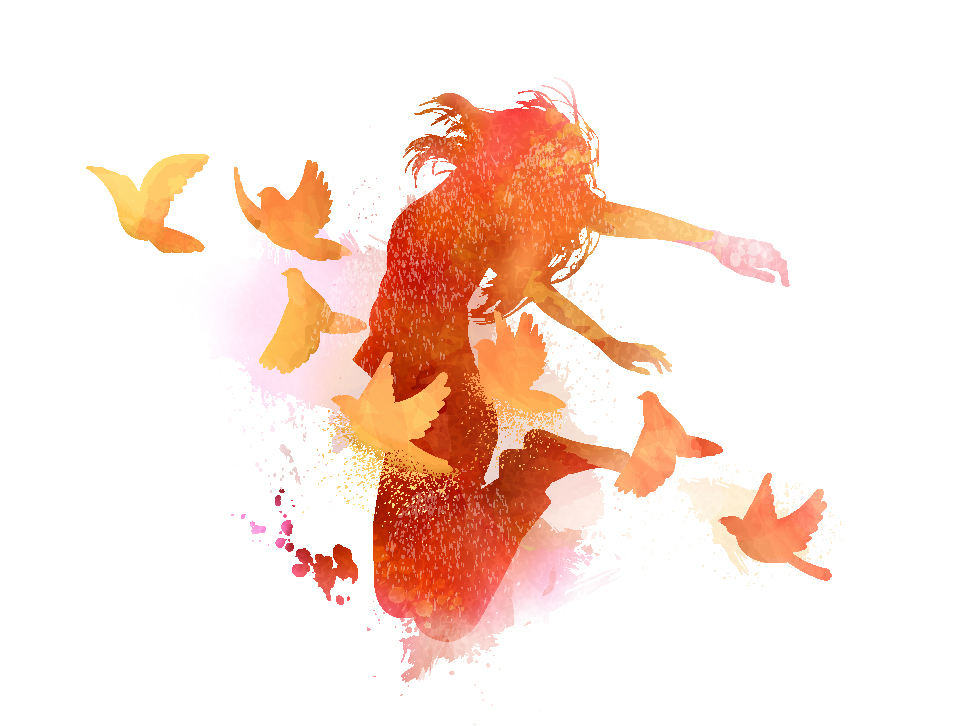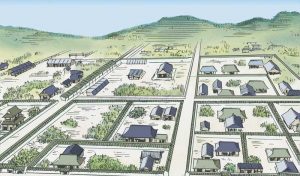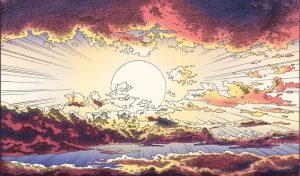Deeply committed to the education and development of children and youth, Ikeda Sensei, as the third Soka Gakkai president, established the high school division in June 1964, the junior high school division in January 1965, and the boys and girls division in September 1965—which together comprise the future division.
The present generation of future division members will be the key protagonists of the kosen-rufu movement when the Soka Gakkai celebrates its 100th anniversary in 2030. With this recognition, the Soka Gakkai monthly study journal Daibyakurenge (starting from its November 2010 issue) launched a series chronicling Sensei’s efforts to foster the future division members, along with graduates’ personal accounts and recollections of meetings and interactions with Sensei in their youth.

May 3, 1966, was a bright, clear day, with no sign of the showers of the previous night. It was the sixth anniversary of Ikeda Sensei’s inauguration as the third Soka Gakkai president. That day, the 29th Soka Gakkai Headquarters General Meeting was held at the Nihon University Auditorium in Ryogoku, Tokyo.
Sensei briskly entered the auditorium at 9:50 a.m., bowing to the participants from the stage. From the balcony, a group of young people leaned eagerly forward, applauding. They were the high school division members who had been attending his lectures.
Masaichi Ueda: Sensei had invited the high school division members participating in his lectures to attend the Headquarters general meeting commemorating May 3 that year.
The Headquarters general meeting is a gathering of leaders, of “generals.” It is a time when those responsible for promoting kosen-rufu come together, and this particular meeting marked the initiation of a fresh start toward the following year, 1967.
We high school division members were seated in the balcony, in a location that, just like Sensei, enabled us to see the entire auditorium. We couldn’t help but feel his hopes for us, as if he was telling us: “Stand with your mentor and become great leaders of kosen-rufu!”
■ ■ ■
At 11:27 a.m., Sensei stepped up to the podium.
In his speech, he spoke of the Seven Bells, the idea that the history of the Soka Gakkai since its establishment in 1930 can be divided into seven seven-year periods.
In closing, he said, “I hope that the members of the youth division, the high school and junior high school divisions, and the boys and girls division will strive to ring in a new set of Seven Bells for the Soka Gakkai in the 21st century, starting from the year 2000.”
The high school division members seated on the upper level applauded vigorously, strong determination rising from the depths of their beings.
Muneyoshi Ichiyanagi: It was a solemn and very powerful meeting. I was moved by its intensity. I was also deeply touched by the fact that on this significant anniversary of May 3, we, the next generation, were being entrusted with ringing in a new series of Seven Bells in the 21st century.
Kayoko Oyama: The Headquarters general meeting was held 10 days after Sensei’s first lecture to us on “Letter from Sado.”
At this significant time [2011], when we have embarked on a fresh advance toward the Soka Gakkai’s 100th anniversary in 2030, I am firmly resolved that we disciples must take the lead and resolutely stand up to the powers that look down on and exploit the people, and to all those who have betrayed their mentor and sought to obstruct the kosen-rufu movement. The time has come for us to prove the greatness of our movement.
■ ■ ■
On the afternoon of May 14, amid the fresh greenery of spring, the high school division members arrived a little earlier than usual at the Soka Gakkai Headquarters in Shinanomachi, Tokyo. It was the day of Sensei’s final lecture in this lecture series that had featured the three writings of Nichiren Daishonin, “The True Aspect of All Phenomena,” “The Heritage of the Ultimate Law of Life” and “Letter from Sado.”
When Sensei arrived just after 3:00 p.m., he said: “Thank you for coming. Let’s do gongyo.”
“OK!” the students replied with great enthusiasm.
■ ■ ■
Sensei’s fifth lecture began.
It would cover the second part of “Letter from Sado” (The Writings of Nichiren Daishonin, vol. 1, pp. 303–6), starting with: “The persecutions Nichiren has faced are the result of karma formed in previous lifetimes … ” (WND-1, 303).
As before, the high school division members read a passage then rephrased it in modern Japanese, after which Sensei lectured on it.
In the lecture on the first half, Sensei had clarified that great persecutions or obstacles are what enable us to expand our life-state, and that this principle is revealed in the Daishonin’s actions.
The lecture on this second half would explain how one should interpret fierce persecution, and that surmounting such persecution is a powerful impetus for changing karma.
A high school division representative read and rephrased the passage from Nichiren’s writings energetically, in spite of being nervous.
The persecutions Nichiren has faced are the result of karma formed in previous lifetimes. The “Never Disparaging” chapter [of the Lotus Sutra] reads, “when his offenses had been wiped out … ” (WND-1, 303)
Sensei said: “It’s important to understand that as you exert yourselves in faith, the three obstacles and four devils[1] and the three powerful enemies[2] are bound to arise as actual phenomena in your lives. But because of them, you will be able to transform your karma and establish a life-state of absolute and eternal happiness.”
Our lives are assailed by powerful tempests that can only be described as the onslaughts of karma. But we mustn’t allow this to discourage us. Sensei teaches us that we can overcome these difficulties, that we have the underlying strength to do so. He encourages us to lead victorious lives and be an example for others.
Sensei’s voice grew more emphatic: “Don’t be afraid of difficulties. You can’t attain Buddhahood in this life without possessing the faith to confidently overcome life’s storms and difficulties, which are part and parcel of human existence.”
■ ■ ■
Sensei then said: “A certain young women’s division leader told me, ‘When I was in high school, I was very pure-hearted. But five, ten years after entering society, I have become cynical and disillusioned. I don’t know what to do about it. What should I do?’”
The high school division members were eager to hear what Sensei would say.
“‘That’s inevitable,’ I told her.”
He then shared with them the way to remain positive and sincere throughout our lives. “As we grow older, we experience and learn many things. The times today are also in a dismal state.
“Without strong faith in the Gohonzon our lives can be easily swayed by our problems, and we can grow negative and cynical.
“Various paths await you in life. To lead a life of integrity, it is vital that you earnestly uphold and maintain your faith in the Gohonzon.”
It’s our heart that is important. With a strong, sincere heart, we can face any hardship head-on. Sensei was teaching the youth the requirements of a leader for kosen-rufu.
■ ■ ■
Since my heart believes in the Lotus Sutra, I do not fear even Brahma or Shakra. (WND-1, 303)
Sensei firmly stated: “These words are very important. When you are responsible for the Soka Gakkai one or two decades from now, please remember them.”
The high school division members nodded as he continued: “‘Brahma or Shakra’ here refers to secular authorities that look down on the people and persecute and disparage practitioners of the Mystic Law. Those who believe in and chant to the Gohonzon must never fear such authorities. You must have courage.”
To uphold the Gohonzon is to be fearless. It is to have the resolve to never be defeated by any persecution. Such inner strength is what enables us to win over every difficulty. That is the conviction of successors, the leaders of the future.
Kotaro Hata: Sensei said: “We must resolutely stand up against those who seek to oppress practitioners of the Mystic Law.” Looking at everyone, he added, “Can you do that?”
“Yes!” we responded enthusiastically.
I’ll never forget his penetrating gaze at that moment.
Shigeru Asami: We made a profound pledge to join Sensei in the eternal struggle against corrupt authority that oppresses the people. I still look back on this lecture as a pivotal point in my life.
■ ■ ■
What is the significance of staunchly pressing forward in the face of adversity?
Iron, when heated in the flames and pounded, becomes a fine sword. Worthies and sages are tested by abuse. My present exile is not because of any secular crime. It is solely so that I may expiate in this lifetime my past grave offenses and be freed in the next from the three evil paths. (WND-1, 303)
Carrying out a struggle for your beliefs in spite of all manner of challenges builds true character.
Sensei said: “The more you pound iron while it’s hot, the stronger the sword you produce. You are that iron.”
The high school division members straightened in their seats.
Sensei continued: “Many people lose courage when they are spoken ill of or persecuted. They become cowardly, trying to keep up appearances. Such people cannot be called great. They end up without any true convictions, philosophy or beliefs. This applies equally to individuals and organizations. This is a very important point.
“Today, the Soka Gakkai is subjected to completely unfounded criticisms, but this is just a way in which we are being tested. Knowing this, I hope you will rejoice whenever you encounter difficulties. Those who can continue to move forward in the face of persecution are truly great.”
It’s not a matter of our circumstances, but of our inner strength. We need to fortify our spirit, making it as strong as fine steel.
Sensei went on: “Nichiren writes: ‘My present exile is not because of any secular crime’ (WND-1, 303). Why, then, was he persecuted? To change his karma and avoid falling into the lower worlds of Hell, Hunger and Animality. As long as you strive for kosen-rufu together with the Soka Gakkai, basing yourself on the Gohonzon, you will be able to transform all your negative karma.”
Those who persevere assiduously, with unwavering determination, together with their fellow members and their mentor until the crucial moment when their karma is transformed will be victorious.
For the sake of those who could see no end to their present sufferings, Sensei then said: “We live in the saha world, where perseverance is required. The greater your mission, the greater your challenges. And the greater your challenges, the greater your good fortune.”
Takaharu Matsumoto: To be honest, I was astonished to hear Sensei say that we should rejoice at difficulties and that our problems are actually proof of good fortune, because that was just the opposite of my conception of a life of good fortune and mission.
I made the following note in my copy of the Gosho: “There is value in striving your hardest when things are toughest.”
Sensei taught me this important life lesson.
■ ■ ■
The local priests are even more ignorant than the Nembutsu priests in Kamakura. They are absolutely pitiful. (WND-1, 304)
In this passage, Nichiren is describing the Tsukahara Debate,[3] which took place while he was in exile on Sado.
The Daishonin so thoroughly repudiated the arguments of his opponents, who had gathered like a noisy flock of crows, that they were rendered speechless.
Sensei said: “Not only was Nichiren Daishonin alone, he was in exile. Several hundred priests descended on his place of exile to debate him, and he trounced them. One of his opponents threw away his prayer beads and became a follower of the Daishonin on the spot.
“Nichiren was correct, and he was strong. I hope you will all become strong champions for the sake of the Law, just like the Daishonin.”
“We will!”
The high school division members’ eyes shone with determination.
■ ■ ■
When great trouble occurs in the world, minor troubles become insignificant. (WND-1, 306)
The lecture moved to a passage in the postscript to “Letter from Sado.” Sensei said in summation: “It’s natural for us to worry about our own personal problems, but once we set our sights on such a lofty goal as kosen-rufu, our problems become less significant. When we don’t have a purpose greater than ourselves, we tend to amplify our problems and let them become a source of painful suffering.”
Sensei called on the youth to stand up together for kosen-rufu: “Cast aside your narrow viewpoint and adopt a grander perspective. This is why practicing Nichiren Buddhism is so important.”
Shogo Ohashi: What I learned through all five of Sensei’s lectures is that when you base yourself on the greater purpose of kosen-rufu, you can make the most of everything in your life. This is true of individuals, organizations and society at large. I now realize that Sensei taught us that the remarkable thing about our movement for kosen-rufu is that it enables us to redirect everything in life in a positive direction.
■ ■ ■
After about one hour, the lecture on “Letter from Sado” ended. Sensei then asked if anyone had any questions, and a question-and-answer session began.
Ikuko Okabe: “I do!” I called out, raising my hand, when Sensei asked if there were any questions. “Please tell us about the connection between mission and good fortune.”
“Good fortune is something we accumulate through our own actions,” he responded. “That good fortune shapes our mission. However, our mission is something we must awaken to. Only when we are aware of it does it become our mission. And it is by carrying out our mission that we accumulate more good fortune. Good fortune is the foundation of everything. Accumulate good fortune within the Soka Gakkai.”
This became a guideline for my life.
Kuniko Nakanishi: At the very end, Sensei said: “These lectures and everything else I do are for the sake of your future. You are probably very busy with your school studies now. You can forget these lectures for the time being. The day will come when you will remember them, I’m sure.”
The lectures were difficult. But Sensei promised us that the day would come when we would understand them. That gave me tremendous hope.
■ ■ ■
Announcing that the lecture was over, Sensei walked down the aisle alongside the male students as he headed toward the door at the rear of the room.
Asayo Sekiguchi: It was Sensei’s last lecture. We hadn’t heard any announcements about subsequent ones. Thinking how much I wanted to see him again, I couldn’t control myself and I stood up and said as he was leaving, “Sensei, thank you!” but nothing else would come out.
“You’re welcome,” he said, and exited the room.
A few days later, I heard we would receive completion certificates from him.
Masaichi Ueda: As high school division leader, I accompanied Sensei outside the room to thank him.
“Everyone is studying hard,” he said. “They did their best. I’d like to present them with completion certificates.” He then added, “Let’s start a new lecture series next month, with a new group of students.”
I was taken aback. It was my understanding that the lectures would end with “Letter from Sado.” He was clearly trying to establish a steady flow of capable people, a core of talented individuals who would ring the current series of Seven Bells and initiate the next set of Seven Bells.
■ ■ ■
On the afternoon of June 11, 1966, the high school division members who had attended the lecture series excitedly made their way to the Soka Gakkai Headquarters in Shinanomachi, Tokyo, to receive completion certificates.
When they entered the room on the third floor of the Headquarters, they were met with a surprise. Both sides of the room were nearly filled with their juniors in the high school division.
Directed by staff members, they took their seats in the center of the room. The younger members looked tense, reading the writings of Nichiren Daishonin as they waited. Realizing that they must be the next group to participate in Sensei’s lectures, the older members felt grown up and at the same time a little envious. Everyone waited anxiously for Sensei to arrive.
Just before 3:00 p.m., Sensei entered the room and said, “Thank you for coming!” He led the students in gongyo, after which he handed out the completion certificates to representatives.
The names of one male and one female high school division members were called out to receive the certificates on behalf of all recipients.
Masafumi Kubota: As a representative of the high school division male students, I received my completion certificate directly from Sensei.
The certificate measured 16 x 23 centimeters (6 x 9 inches). To the left and below the printed words, “First Class,” my name was written.
I received a bundle of 51 certificates for my fellow students. The certificates represented the many precious hours we had spent with Sensei.
Shizue Enomoto: I received the completion certificates on behalf of the 51 female participants. They were printed with a red stamp and the words, “Certificate of Completion of Special High School Division Lecture Series. June 11, 1966, Soka Gakkai President Daisaku Ikeda.”
Sensei said of the certificate, “It’s a small thing, but it has great significance.” I was overcome with emotion.
Kumiko Wakabayashi: As he presented the completion certificates to the representatives, Sensei said: “I learned a great deal from President Toda’s lectures. Once, at the end of a lecture, he took a flower from the vase on his desk, put it in my lapel, and remarked, ‘Here’s an award for an excellent student who has completed the course.’ To me, it was the highest honor in the world. It’s the heart that matters.”
Sensei instilled great significance into this simple certificate as an award bestowed on disciples by the mentor.
■ ■ ■
Looking across the room, Sensei declared: “I’d like to form a new group, the young men’s Hosu-kai [Young Phoenix Group], from those who have completed the lecture series, and begin training you anew.
“And for the young women who have completed the course, we’ll establish the young women’s Hosu Group [Young Phoenix Group], for the sake of the Soka Gakkai’s future. What do you think?”
The students beamed and applauded thunderously.
With a view to the future, Sensei added: “The young men’s division Suiko-kai and the young women’s division Kayo-kai have become the core of the Soka Gakkai and achieved great growth for our organization. Making that our tradition, I want to take steps now for the sake of the future 20 and 30 years hence!”
The members’ eyes shone as they nodded in understanding.
“Having such deep, strong conviction and sense of mission will be the foundation of the young men’s Hosu-kai and young women’s Hosu Group. You all have a proud and great mission.”
Yoko Mizuno: Sensei said: “Please advance with the pride of being the first class [of these two training groups]. Don’t become arrogant because you were chosen for these groups. Don’t become worms within the lion’s body.” His strict words also conveyed his warm concern as our mentor.
Hiromi Yabe: The new groups were established with Sensei’s words “Be strongly united, and always be ready to come together, to study together, and to receive training together whenever the opportunity arises.”
Our mentor would always be our eternal touchstone. That was our spirit.
■ ■ ■
The day the completion certificates were presented became the day of the establishment of the Hosu-kai and the Hosu Group. [June 11, 2011, marked the groups’ 45th anniversary.]
The emcee then announced that the first class would leave the room and a staff member directed them out.
Kazumi Kondo: As we were leaving, Sensei began his lecture to the second class. We were able to hear that they would study “On Practicing the Buddha’s Teachings.” I was amazed. He took no time off in his efforts. That example was also in a way a lecture for the first class.
Hiroko Takagi: I felt sad that we had to leave without hearing another lecture. But as we were exiting the room, Sensei called out to us, “Let’s meet again!”
■ ■ ■
The high school division members of the first class returned to the room on the second floor where they had left their belongings, and a Soka Gakkai leader individually presented them with their completion certificates.
Then the entire group was taken to a restaurant near the Soka Gakkai Headquarters. Sensei had instructed that they be treated to a meal.
Shizue Enomoto: Filled with excitement, we sat down at the tables covered in white tablecloths.
When we saw the curry rice brought to us, we were thrilled. Sensei had told us there would be plenty of meat in it and there was. The young men were very happy.
I remembered that Sensei had shared with us that he’d learned to make curry rice from Mr. Toda. As I ate the meal, I savored Sensei’s deep concern for us.
■ ■ ■
Sensei established the Hosu-kai and Hosu Group after five lectures. Then he began a second series of lectures. It was just two years since the high school division had been established (in 1964). At the end of that month (June), high school division membership reached 100,000. Everyone at the time thought that a solid trajectory toward the future had been established. But not Sensei. He knew better than anyone that fostering successors was not an easy task. He later wrote about his feelings to his disciples, quoting the Chinese author Lu Xun (1881–1936), “It is a joy to nurture others, even though one knows doing so means growing weaker and frailer, one drop of blood at a time.”[4]
Leaders absolutely must be fostered for the sake of the future! Sensei took yet another step to achieve that goal.
Masaichi Ueda: Sensei was utterly committed to raising leaders for the future. He knew that lectures were not enough, that contact at meetings was not enough. Without a doubt, he was going a step further, dedicating himself wholeheartedly to fostering the next generation with his entire being.
■ ■ ■
Shortly after the formation of the Hosu-kai and Hosu Group, the members received news that there would be an outdoor training session at the Hakone Training Center (the present-day Kanagawa Training Center) on July 16, 1966.
To be continued.
Translated from the June 2011 issue of the Daibyakurenge, the Soka Gakkai’s monthly study journal.
References
- Three obstacles and four devils: Various obstacles and hindrances to the practice of Buddhism. The three obstacles are: 1) the obstacle of earthly desires; 2) the obstacle of karma; and 3) the obstacle of retribution. The four devils are: 1) the hindrance of the earthly desires; 2) the hindrance of the five components; 3) the hindrance of death; and 4) the hindrance of the devil king. ↩︎
- Three powerful enemies: Three types of arrogant people who persecute those who propagate the Lotus Sutra in the evil age after Shakyamuni Buddha’s death, described in the concluding verse section of the “Encouraging Devotion,” the 13th chapter of the Lotus Sutra. The Great Teacher Miao-lo of China summarizes them as arrogant lay people, arrogant priests and arrogant false sages. ↩︎
- Tsukahara Debate: In January 1272, several hundred priests of the Pure Land, True Word and other schools from both Sado and Japan’s mainland gathered in the snow in front of Nichiren Daishonin’s dwelling at Tsukahara on Sado, the Sammai-do, and challenged him to a debate. Nichiren refuted all their arguments, pointing out the contradictory assertions and scriptural inconsistencies contained in their doctrines. Several of these priests, along with their lay followers, renounced their former beliefs on the spot and converted to the Daishonin’s teachings. ↩︎
- Translated from Japanese. Shiyige (the name of a team of 11 Chinese writers), Rojin no Shogai (The Life of Lu Xun), translated by Jiro Kaneko and Nobukazu Ohara (Tokyo: Toho Shoten, 1976), p. 283. ↩︎
You are reading {{ meterCount }} of {{ meterMax }} free premium articles





